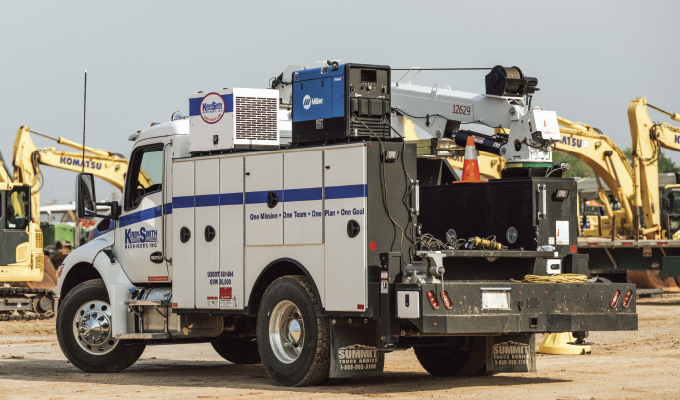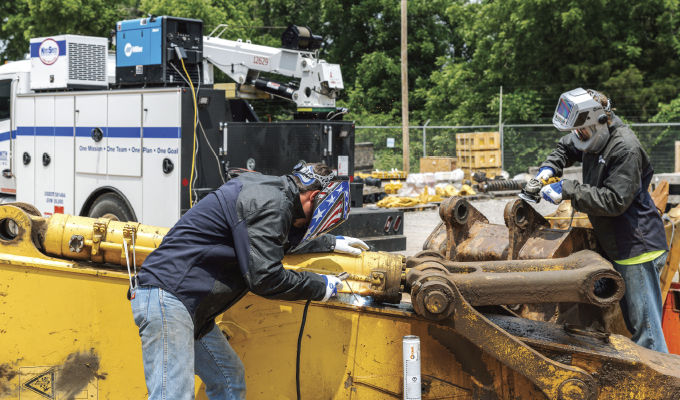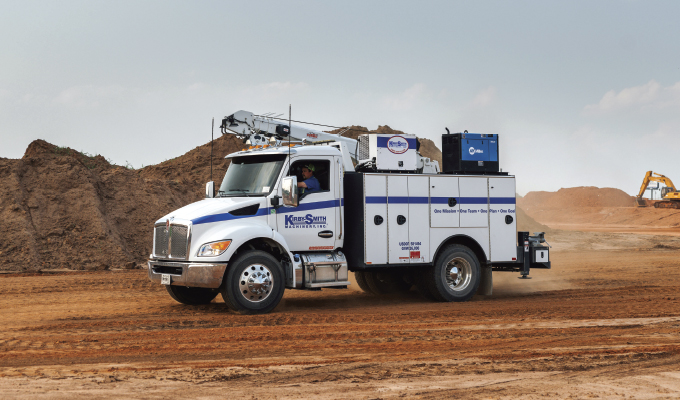Work truck operators today are under a fair amount of pressure to adhere to heavy demands and tight schedules, all while staying within legal operating guidelines. Completing a wide range of tasks on repair jobs and meeting the Department of Transportation’s weight regulations requires a delicate balancing act. Fortunately, there are ways to gain efficiencies when it comes to managing schedules, budgets, and weight requirements. Here are four tips for optimizing your work truck for productivity.
TIP 1
Take advantage of multipurpose equipment
Like a Swiss Army knife in your pocket, all-in-one solutions for a work truck require less space while working smarter and harder. Equipment that includes a battery charge and crank assist gets rid of the need to carry a stand-alone battery charger on trucks. Engine driven welders give operators the ability to weld and use auxiliary power for jobsite tools at the same time.

TIP 2
Invest in newer and better technologies for ROI
Newer equipment is often smaller, lighter, and stronger when it comes to performance, adding up to better ROI on several fronts:
- More fuel and space savings—a lighter machine means greater fuel economy. Plus, smaller equipment leaves room to add or arrange other important equipment on the truck.
- Faster and easier setup—more manufacturers are making equipment with technology that improves output with interfaces that simplify setup to start working faster. For example, the new Bobcat™ 265 engine driven welder from Miller features Auto-Set™, a technology that provides weld parameters after welders enter the material and thickness, which is great for welders of all skill levels.
- Maintenance alerts—on the tech front, some machines allow operators to gauge their fuel levels with a color-coded digital indicator and set alerts for routine maintenance, making it even easier to schedule service at convenient times and avoid unexpected downtime.
TIP 3
Leverage productivity data
When it comes to moving from one job to another, productivity data can help with tracking and organizing tasks, whether that’s monitoring the truck, welder usage, or weld process data. Additionally, that weld process data can be leveraged to improve accuracy when it comes to bidding and scheduling jobs.

TIP 4
Increase safety, control, and efficiency with remotes
Making a repair involves a number of steps and an even greater number of footsteps. A start-stop remote control goes a long way in reducing time wasted. The ideal device does a number of things: improves safety by eliminating the need to walk through rough terrain or cluttered areas, decreases fuel costs by reducing engine idling, and even contributes to a quieter jobsite.
By investing in new tools and technologies, operators can more easily manage the demands of the job and the DOT—in short, a win for you, for the tight deadlines, and for your bottom line.
ABOUT THE AUTHOR
Brian Bellile is a product manager for Miller Electric. For more information, visit www.millerwelds.com.




